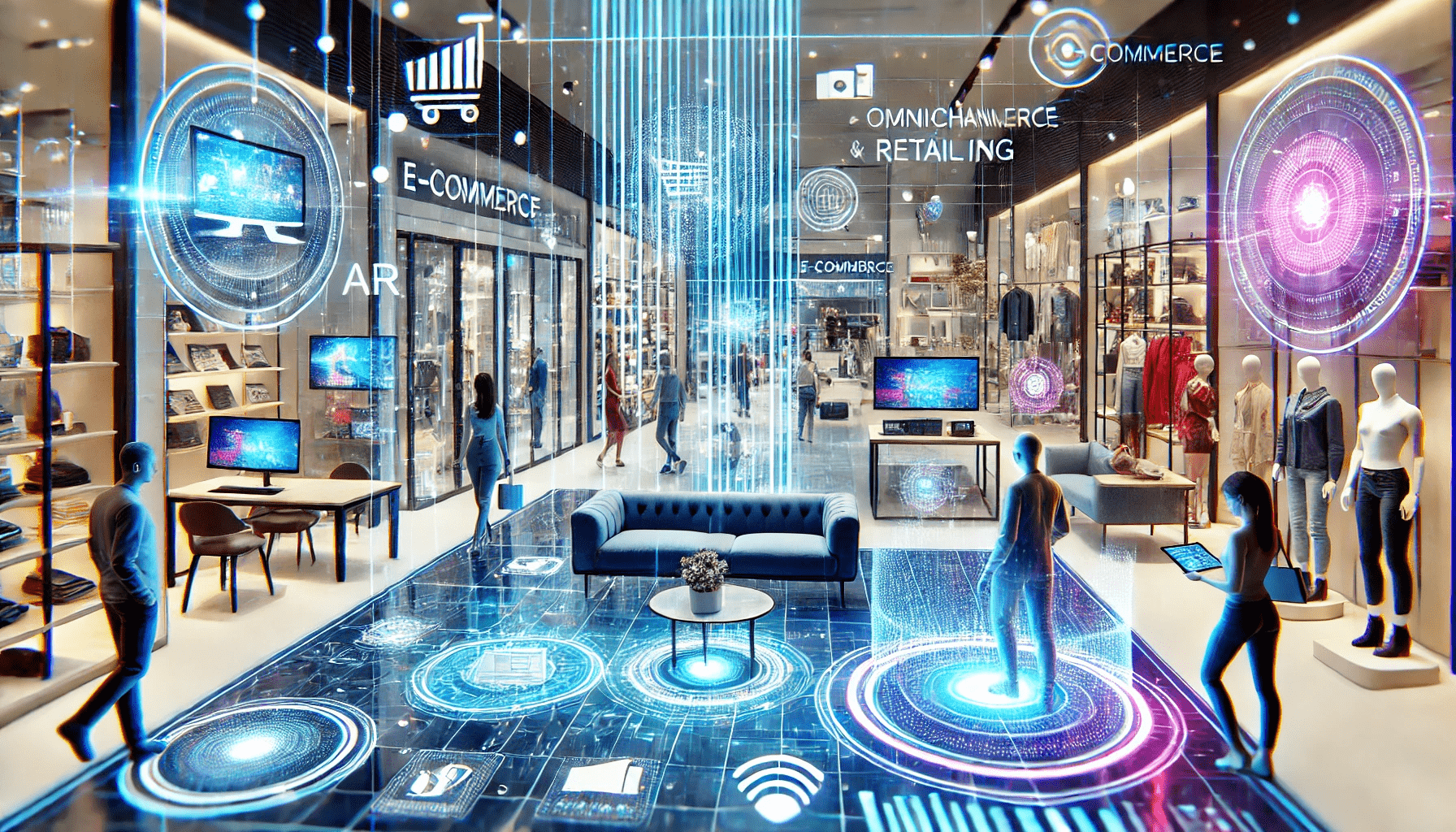The Evolution of Omnichannel Retail
By: Cela | Jan 22, 2025
The future of e-commerce is intricately linked with the evolution of omnichannel strategies, aiming to provide consumers with a seamless and personalized shopping experience across various platforms. As technology advances and consumer expectations shift, businesses must adapt to remain competitive.
The Evolution of Omnichannel Retail
Omnichannel retailing integrates multiple shopping channels—such as physical stores, online platforms, and mobile applications—into a cohesive customer experience. Unlike multichannel retailing, where each channel operates independently, omnichannel strategies ensure that all channels are interconnected, providing a unified and consistent experience for consumers. (Shopify)
Key Trends Shaping the Future
1. Personalization Through Technology: Retailers are increasingly leveraging technology to offer personalized shopping experiences. This includes using body scanners for precise measurements and deploying tools that provide customized promotions based on individual preferences. Such personalization enhances customer satisfaction and loyalty. (Investopedia)
1. Integration of Physical and Digital ("Phygital") Experiences: The distinction between online and offline shopping is becoming increasingly blurred. Retailers are creating "phygital" experiences where physical and digital interactions merge, such as digital mannequins that "know" your clothing preferences and automated home delivery systems. This integration aims to provide a seamless shopping journey, regardless of the channel. (McKinsey & Company)
1. Advanced Data Analytics: Utilizing sophisticated customer analytics allows retailers to understand and predict consumer behavior better. By analyzing data across all channels, businesses can tailor their offerings, optimize inventory management, and enhance marketing strategies to meet the evolving needs of their customers. (McKinsey & Company)
1. Adoption of Augmented Reality (AR) and Virtual Reality (VR): Implementing AR and VR technologies enables customers to visualize products in real-time, bridging the gap between online and in-store shopping experiences. For example, virtual try-on features allow customers to see how products would look on them or in their homes, increasing confidence in online purchases. (Wikipedia)
Challenges and Considerations
While the benefits of an omnichannel approach are significant, retailers face challenges in implementation:
- High Implementation Costs: Developing an integrated omnichannel system requires substantial investment in technology infrastructure, including new software platforms, hardware upgrades, and system integration. These costs can strain budgets, particularly for smaller retailers competing with larger organizations' resources. (BigCommerce)
- Complex Data Management: Managing customer data across multiple channels creates significant complexity. Retailers must maintain accurate, real-time information about inventory, customer preferences, and purchase history across all touchpoints. Cohesion requires sophisticated data management systems and careful attention to data security and privacy regulations. (BigCommerce)
The Path Forward
To thrive in the future e-commerce landscape, retailers should:
- Invest in Technology: Adopting advanced technologies like AI, AR, and VR can enhance personalization and customer engagement. For instance, Alibaba's 'Wonder Avenue' at the Paris 2024 Olympics showcased a blend of physical and digital commerce, offering hyper-personalized shopping experiences powered by AI. (Vogue Business)
- Focus on Customer Experience: Providing a consistent and seamless experience across all channels builds trust and loyalty. This includes ensuring that online and offline interactions are complementary and that customer service is responsive and effective.
- Leverage Data Effectively: Utilizing data analytics to understand customer behavior and preferences allows for more targeted marketing and inventory management, leading to increased efficiency and customer satisfaction.
By embracing these strategies, retailers can position themselves to meet the demands of the modern consumer, ensuring relevance and competitiveness in the evolving e-commerce landscape.
Use CELA Technology today!
Provide your shoppers an online shopping experience that just feels like in-store with Augmented Reality and 3D interactions
Contact UsRecent Posts
Dec 17, 2025
Shopify’s Leap into 3D & Interactiv...
Shopify’s Winter 2026 Editions mark a major shift toward 3D, interactive, and spatial commerce—resha...
Sep 21, 2025
How to Boost User Engagement Time a...
Increase your website's engagement time from seconds to minutes. Learn how a 3D configurator from CE...
Aug 28, 2025
How to increase online sales for cu...
Are you tired of racing to the bottom on price? Your unique, high-quality customizable products offe...




